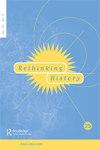Reclaiming History in the British Museum entranceway: imperialism, patronage and female, queer and black legacies
IF 0.8
2区 历史学
Q1 HISTORY
引用次数: 0
Abstract
ABSTRACT Today the British Museum (BM) entranceway consecrates imperialism and patronage. Undertaken as a journey, this paper reclaims its invisible female, queer and black legacies. In recent years there has been widespread acknowledgement that the BM needs to address its role in the British Empire. Yet, in the twenty-first century, the museum has shored up its imperial inheritance through its refurbished entranceway: the Weston Great Hall and Queen Elizabeth II Great Court. In these introductory chambers, imperialism provides the backdrop for the contemporary donors’ names and exclusive corporate events. Here, museum heritage has become an arrow that signals progress through economic capital. I argue that the BM’s reinforcement of its imperial legacy in the twenty-first century has come at the expense of other claims. Exploration of the historic entranceway shows it facilitated visitors’ long-term engagement through artmaking on-site and the (now closed) Reading Room. Female, queer and black participants undertook creative, transgressive and political activities that led to social change. Anne Seymour Damer, Joel Augustus Rogers and Virginia Woolf developed practices that have particular significance for the museum. Reclaiming hidden female, queer and black legacies in the entranceway points to future inclusions. Importantly, these reclaimed histories are not quiet, counter moments pulled from the corners of the BM’s vast estate; rather, they once took centre stage.在大英博物馆入口处重新认识历史:帝国主义、赞助、女性、酷儿和黑人遗产
今天,大英博物馆(BM)的入口通道是帝国主义和赞助的圣地。作为一段旅程,本文重新审视了其无形的女性、酷儿和黑人遗产。近年来,人们普遍认为大英博物馆需要解决其在大英帝国中的角色问题。然而,在21世纪,博物馆通过其翻新的入口:韦斯顿大厅和伊丽莎白二世女王大厅,巩固了它的帝国遗产。在这些介绍性的房间里,帝国主义为当代捐赠者的名字和独家公司活动提供了背景。在这里,博物馆遗产已经成为一个箭头,标志着经济资本的进步。我认为大英博物馆在21世纪强化其帝国遗产是以牺牲其他主张为代价的。对历史入口的探索表明,它通过现场艺术创作和(现已关闭的)阅览室促进了游客的长期参与。女性、酷儿和黑人参与者进行了创造性的、越界的和政治性的活动,导致了社会变革。安妮·西摩·达默、乔尔·奥古斯都·罗杰斯和弗吉尼亚·伍尔夫发展了对博物馆有特殊意义的实践。在入口通道中重新挖掘隐藏的女性、酷儿和黑人遗产,指向未来的包容。重要的是,这些被回收的历史并不是安静的,从大英博物馆广阔的地产的角落里抽出的反作用的时刻;相反,它们一度占据了舞台的中心。
本文章由计算机程序翻译,如有差异,请以英文原文为准。
求助全文
约1分钟内获得全文
求助全文
来源期刊

Rethinking History
Multiple-
CiteScore
1.20
自引率
0.00%
发文量
26
期刊介绍:
This acclaimed journal allows historians in a broad range of specialities to experiment with new ways of presenting and interpreting history. Rethinking History challenges the accepted ways of doing history and rethinks the traditional paradigms, providing a unique forum in which practitioners and theorists can debate and expand the boundaries of the discipline.
 求助内容:
求助内容: 应助结果提醒方式:
应助结果提醒方式:


